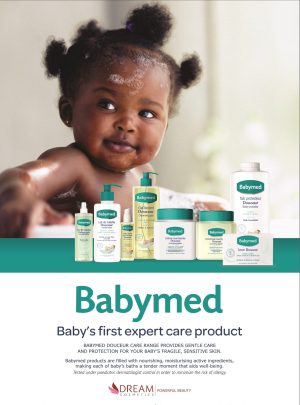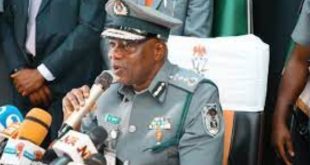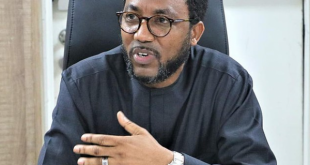
By Chief (Dr) Eugene Nweke
1. Introduction
This modest is borne out of the quest to undertake a comparative study of an ideal Maritime industrial settings.

The aim is to comparatively sample an efficient and effective Maritime Industry as a case study, in order to highlight its place, especially, in a time of national emergency.
It is an acceptable industry fact, that, in the past two years,the prevalent Apapa traffic jam has attained a crescendo, such that, it has become a national embarrassment,thereby calling for national emergency attention.

However, it is a expected, that, if the maritime Nigerians are professionally alert, alive and active, not being passive to their professional and statutory obligations, then, this seeming national embarrassment should not have reared its ugly head, how much more lingering to this moment.

Consequently, while dwelling on the below highlights of the Maritime America, this modest tends to subtly underscore the noticeable handicaps in the Nigeria’s Maritime Industry, especially in the aspect of bureaucratic bottlenecks, managerial ineptitude, inefficient infrastructure and insufficient equipment inherent in the industry.
Without sounding immodest, it is not enough to say after reading, that, “we are not there yet”, but the truth is that, generally, the Maritime Industry thrives on the note of international best practices, and it is rated as one of the over regulated industries in the world due to its security and safety related concerns, inherent.
This modest, does not intend to belabor the out cries trailing the failure of the Maritime Nigerians to secure a seat at the last International Maritime Organisation(IMO) recently concluded Council elections. The Nigeria’s delegation was led by the Minister of Transport.
However, the derivable information contained in herein, may make room for further professional considerations that might be responsible for this failure, even though it is unspoken of.
It on this premise, that, this modest wish to implore us to be objective in our sense of judgement, while reading through this modest, hence, the choice of undertaking a comparative case study with the Maritime Americans;
2. The Capacity Of Maritime American Industry To Respond During National Emergency
The September 11,2001 terrorist attack on the World Trade Center, brought out a scenario that revolves around professional inclination and promptness, which was later adjudged to be a deciding moment for industry safety and security of a nation.
During this dark hour, the American Maritime Industry, unprepared, was put to test, subjected to prove its capacities to respond to emergency situations.
On this faithful day, the subways , bridges and tunnels were closed down, the only possible escape was through the water.
It was during this chaotic setting, that, the American mariners from all industry facets knew what to do, and how to do it, without any official command or directives, every available floating objects on the water (crafts such as tugs, ferries, pleasure cruise boats, etc) in their fleets, were effectively deployed for rescue mission.
Throughout the afternoon and evening of that faithful day, by nightfall, New York Mariners who knew what they had to do and worked together to do it, had successfully rescued and evacuated about half a million distressed persons from Manhattan, thus, becoming one of the largest maritime evacuation in history.
It was then, that, the Americans appreciated the strategic roles of the Maritime industry, hence, it stated that, “No Industry has been more vital to the success of our country than that of America’s Maritime Industry”.
3. Highlighting The Defense And Humanitarian Roles Of The America’s Maritime Industry
America’s Maritime Industry ( ranging from the Longshoremen in ports along its four sea coast, to tug boat operators navigating the Mississippi , to the ship builders in East Coast, to the men and women who crew American-flag vessels of all types, etc), indeed provides hundred of thousands of jobs for Americans,
The industry is noted for the greater volume of commercial cargo and troops it moves around the globe with greater efficiency and cost effective above other modes of transportation. It promotes homeland security as a catalyst for national defense, while ensuring a most environmental friendly transport mode.
No doubt ,the water borne transportation of the America’s Maritime industries stands out as the core driver of international trading activities and the lifeblood of the nation’s domestic commerce and rated amongst the world’s largest economies.
In addition, the industry is globally reputed for its humanitarian roles, at least notable for handling greater volumes of donor supplies, and boosting its image as world number one distributor of foods to the distressed /poor countries of the world and prompt responds to global emergencies.
4. The Global Rating Of Maritime America’s, Statistics
The America’s Maritime Industry today is rated and notable for the followings:
a). Its uniqueness among the maritime nations of the world, looking at its scope, magnitude and diversity.
b). Being characterized by its innovation and productivity , and being the most environmentally friendly transport mode.
c). Ensuring and being a major factor promoting the economic well being and growth of the economy via international and domestic trade.
d). Its strategic relevance to national defense – deploying and sustaining American forces and the maintenance of the US maritime industrial base.
e). The building and deploying of over 40,000 vessels, comprising the domestic fleet, interchanging with trucks and railroads, provides a strong domestic transportation system serving as a facilitator for international trade.
f). The 95% of its foreign trade is move by ship, 6,996 ocean-going vessels recorded 55,560 calls at US ports, transporting 1.2billion metric tons of US imports and exports to a combined value in excess of 1 trillion US dollars. On the average, that equates to over 180 ocean-going vessels calling at US ports every day.
g). Providing and supporting jobs in the entire economy, which annually accounts for:
i. 2.56 billion short tons of cargo, with 40% serving as domestic.
ii. 100million passengers on ferries and excursion boats.
iii. 100,000 shipyards jobs for skilled craftsmen.
iv. 2.5million domestic Jobs indirectly created by shipyards.
v. $29billion in wages.
vi. $11 billion in taxes .
vii. $100 billion in annual economic outputs.
e). With modern ocean- going ships plying the International deep blues, making her a major participants to the global marine economy .
ii. Passenger vessels- ferries and cruise ships, undertakes daily commuters services (for works and vacations needs) with an annual carriage to the tune of tens of millions of Americans.
iii. Thousands of tug boats and berges are deployed for essential role’s in transporting agricultural products to ports for export.
iv. Various ships are deployed for coastwise trade, moving bulk commodities along the coastal states. This is also applicable to the great lakes vessels.
v. Every state in American has its own port( 360 Ports); some serving as the gateway to the US global economy , and smaller regional ports serving as hubs for domestic waterborne commerce.
vi. Various tug vessels providing towing and harbor related services in every ports.
vii. Specialized exploration and drilling vessels providing offshore supports to the oil industries in the Gulf and off coasts and thus transporting supplies, Personnel, and crude oil to US coast.
viii. A diversified dredging industries – helping to maintain and improving the U.S Ports and waterways , and replenishing US beaches from erosion. Note that, ‘Beaches’ also provides its own form of services world wide.
ix. With over 95, 000 miles of coast line, 360 Ports and 3,700 Cargo and Passenger Terminals, protecting as much as 290,000 square miles of water.
x. The Maritime Americans launched a Water Way Watch (- WWW) security program tagged 877-24Watch, which serves as the ‘Eyes and Ears” of the Maritime Domain Awareness -MDA.
h). Believing that, the America’s coasts, rivers, bridges, tunnels, ports assess roads, ships, military bases, and waterside industries are potential targets, the Maritime Domain Awareness -MDA in this context, refers to the ” Collaborative information collection and sharing between the Maritime industry, Federal, State, and Local authorities and the general public.
i). Wherefore, “the purpose of America’s WaterWay Watch is to use the “eyes and ears” of waterfront users, the thousands of crew members on vessels in domestic commerce, the 70 million US recreational boaters, marina operators and other waterfronts concessionaires, to detect and report suspicious activities that may be terrorist related.
j). The US Maritime Policy is premised on four major legislative and interdependent struts supporting the US-Flag Maritime Industry, namely:
“i. The Jones Act- promoting and protecting trade between two or more contiguous American ports, must be conducted by US owned carrier companies who employ US mariners aboard US built vessels.
The Jones Act keeps American shipping companies, shipyards, mariners, maritime academies and thousands of Maritime Americans working.
ii. Maritime Security Program(MSP) – This is a $186 million program that provides expenses-offset to a 60 vessels ( commercial fleet) of; container ships, roll-on -roll- off vessels and tankers that carry military cargo to and from war theaters.
This fleet carries more than 70% of the cargoes supporting US troops and coalition forces.
iii. Cargo Preference Laws- demands that a percentage of government cargo must be carried on US-flag vessels.
This cargo includes a wide range of home grown or home manufactured products from humanitarian aid to large construction machinery all over the world and is the lifeblood of the US- Flag fleet.
iv. The Tonnage Tax- a tax regime passed by Congress in 2014 intended to level the playing field for the US-Flag operators competing in foreign trades.
Together, these government programs assures of a continuing investments in the US-Flag and guarantee that commercial sealift capability will be robust, efficient and affordable for national, economic and homeland security”.
k). Experienced and trained manpower that will mann and crew both the commercial and merchant vessels, and the skilled shipyards workers needed in the building and repairs of Navy/Commercial ships is what it takes to maintain a strong maritime Industrial base.
In this regards, the services of shipyards workers and seafarers becomes a key component necessary to drive and sustain the US maritime industry superiority:
a). Seafarers: – “A strong national maritime industry also requires an education and training base to provide needed skills and training necessary to develop and maintain a cadre of trained personnel for vessels operation and management”.
To achieve this noble objectives, the following key elements was put in place:
i. Three Federal Academies – namely: 1). The US Naval Academy. 2). The US Coast Guard Academy. 3). The US Merchant Marine Academy.
ii. Six State Academies -namely: 1). Maine. 2). Massachusetts. 3). Fort Schyler (NY). 4). Great Lakes (MI). 5). Texas A&M. 6). California
b). ShipYards: though the US naval shipyards also suffers limited surge capacity on account of limiting factor bordering on Personnel and equipment for ships, hence, hindering facility upgrades.
As observed, key personnel leaving and not being replaced, younger generations don’t view the ship construction and related industries as a place to be in today’s market. The key elements for achieving on-time and on-price production for a technically advanced ships building system is majorly a trained and dedicated work force.
The only solution to boost the performance of an experienced shipyards and manufacturing plants is encouraging additional training and education at all levels. Entry level training alone is not enough to drive this course.
Notwithstanding, the US has the largest and adequate private shipyards facilities.
Conclusion:
The Nigeria’s Maritime Industry – in contrast, the first industry operational defect noted in our climate is the information hoarding, hurdling and non accessibility of statistics and data amongst the agencies of the government.
To state the obvious, the absence of a reliable data/statistics in the industry seems to have become an industry normal practice
The non- interdependency or absence of synergy amongst the various agencies of the government in the same industry is a hurdle. Non -simplified and over bloated extant Acts of the various agencies constitutes a hindrance.
Without hyping the implications of the prevailing observed weaknesses over legislative inputs in some of the extant industry laws, in specifics terms, the Naval Act, NIWA Act, NIMASA Act, NPA, etc require harmonization of functions /operations ( and not the agencies seeing themselves as a sole umpire or strange bed fellows co-existing in the same industry).
Maritime policies are often not professionally tailored or structured with professional intent or to achieve defined objectives, wherefore, administrative performance indicators are immeasurable.
Operational obligations seems not rooted on strong administrative will/capacity to drive its sustainability, hence, the culture of impunity with regards to policy inconsistencies thrives unabated.
As it stands, the rapids, reaction and response rate or strong responds capacity of the concerned lead agency in the Maritime Industry is uncertain due to various factors. Here again, the persistent Apapa traffic jam is prime example, in questioning their capacity in this regards, even though it is politically attended to than professionally handled .
From this case study, a model for developing the various sectors has been observed.
It further shows that, the Maritime Industry has the capacity to create millions of Jobs and generate the highest revenue if properly harnessed.
In the same vein, this is applicable to safety and security concerns.
Again, the problem of a non defined and cut clear policies in the Nigerian Maritime Industry poses a serious challenge.
One aspect of lessons derivable from this case study, is the one dealing with educational training of the skilled work force in the sector.
On this note, training and capacity building institutions such as MAN Oron should not be under founded or left at the mercies of an agency, but should be of a national priority.
Owing to time factor, the aspects of Fishery industry, underground water survey, aquatics, etc is not given much attention or prominence, but for another discourse.
It is in consideration to the above information, that, the proposed Maritime Industry Forecast for 2018 is seen as a welcome development, provided it will be based on empirical collations of parameters and variables.
Fwdr,chief (Dr) Eugene Nweke, CONS, Rff, ,Fpta, Fnis,Fffa, Facsc, Mccc.
Maritime Consultant/Training: Anambra State Bonded Container Freight Terminal Limited.
Facilitator/Vice Chairman: Customs Consultative Committee – CCC.
CEO, virtues marine and freight services ltd.
Director, Special Projects: Vegasirius Nig. Ltd.
Gbobaniyi of Ilogbo Eremi kingdom.
“Aluta- Five Star General”/Commander Of Order Nigerian Students -CONS.
Ex- National President of NAGAFF.
2a Maybin Street, Apapa, Lagos, Nigeria .
Cell. 08136242266,08023630299.
Email: eugeneinweke@yahoo.com
Copyright MMS Plus.
All rights reserved. This material, and other digital content on this website, may not be reproduced, published, broadcast, rewritten or redistributed in whole or in part without prior express written permission from KINGS COMMUNICATIONS LIMITED.
 MMS PLUS NG – Maritime, Aviation, Business, Oil and Gas News Online Newspaper with coverage in Maritime, Oil and Gas, Aviation, Power and Energy as well as Financial News
MMS PLUS NG – Maritime, Aviation, Business, Oil and Gas News Online Newspaper with coverage in Maritime, Oil and Gas, Aviation, Power and Energy as well as Financial News









